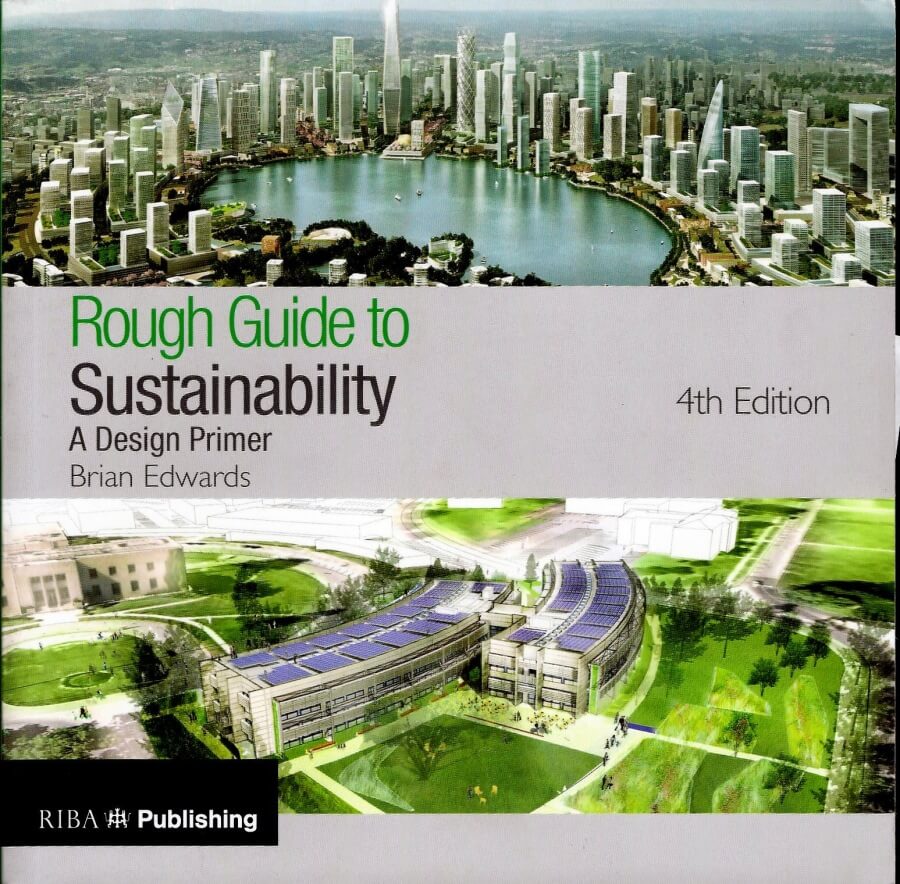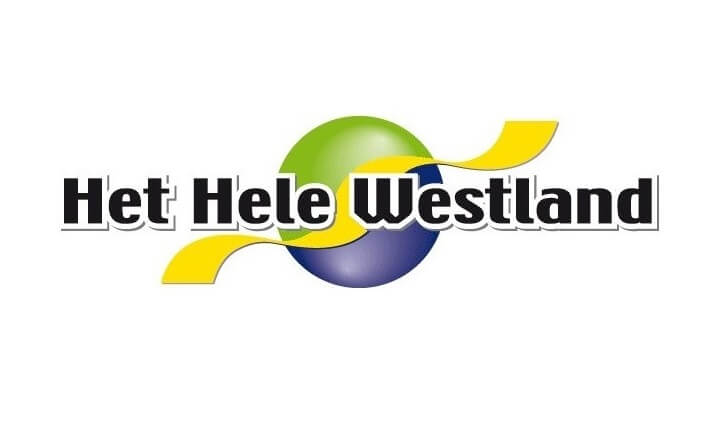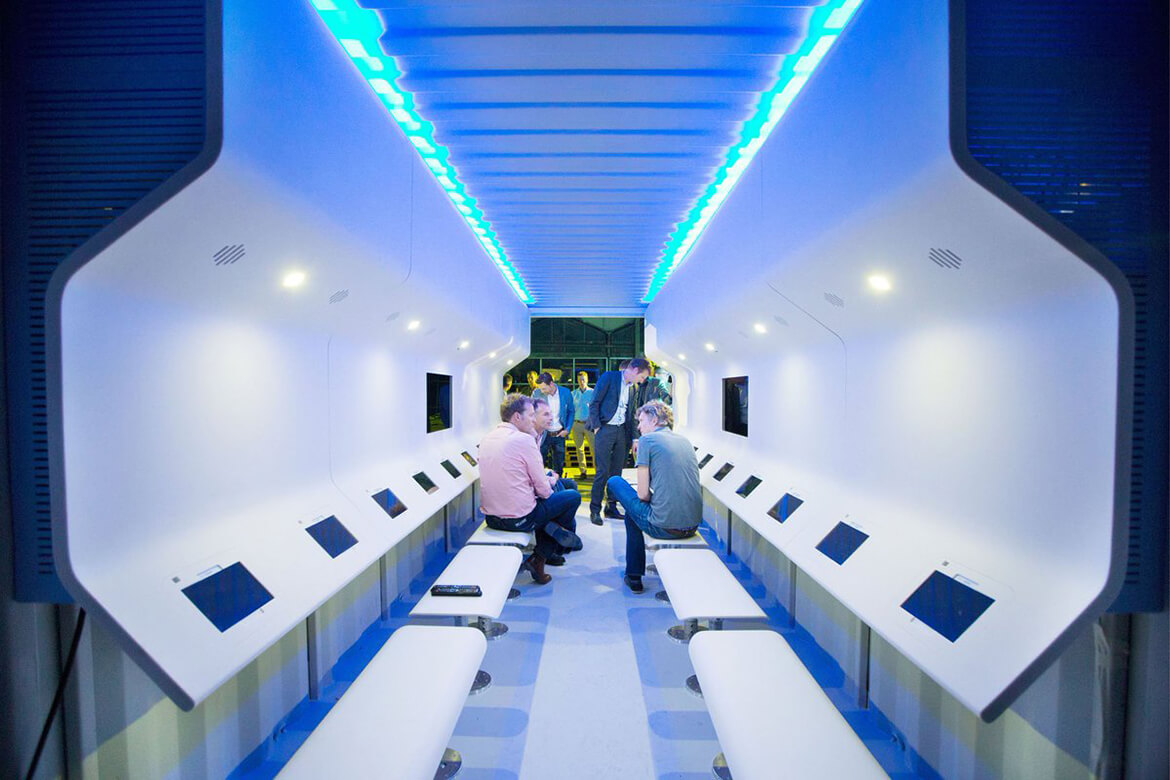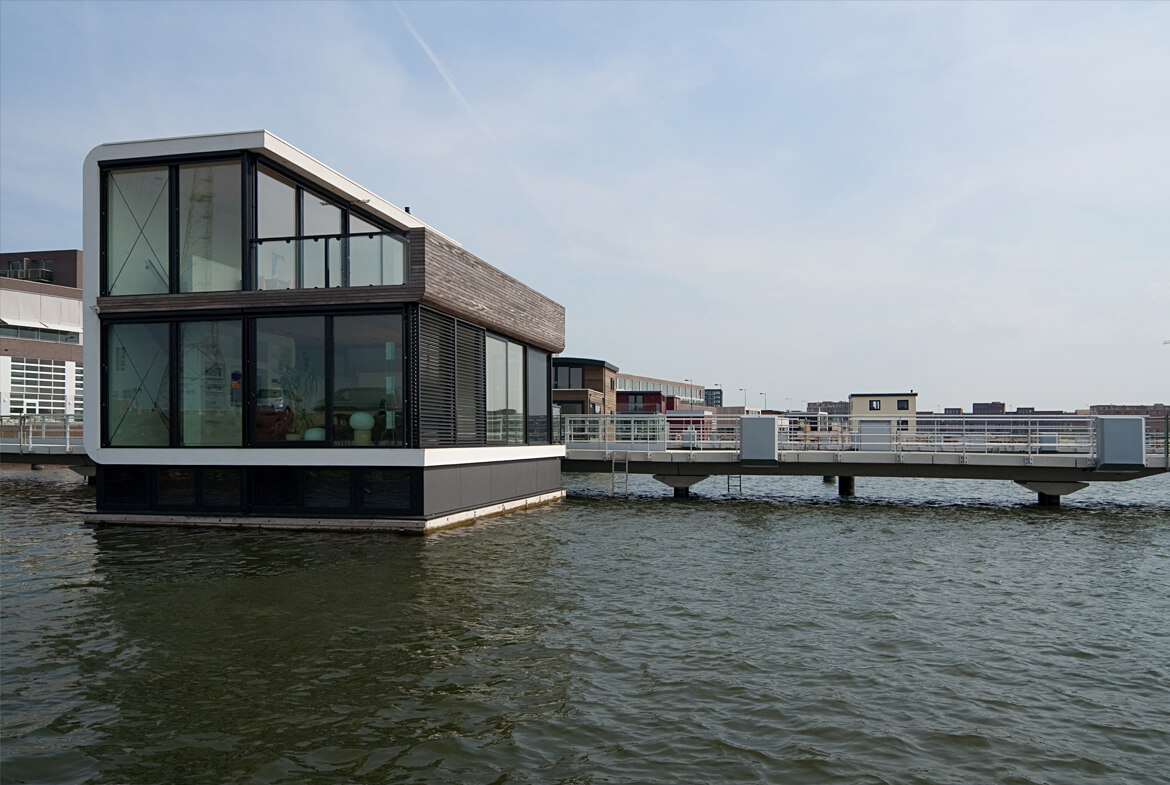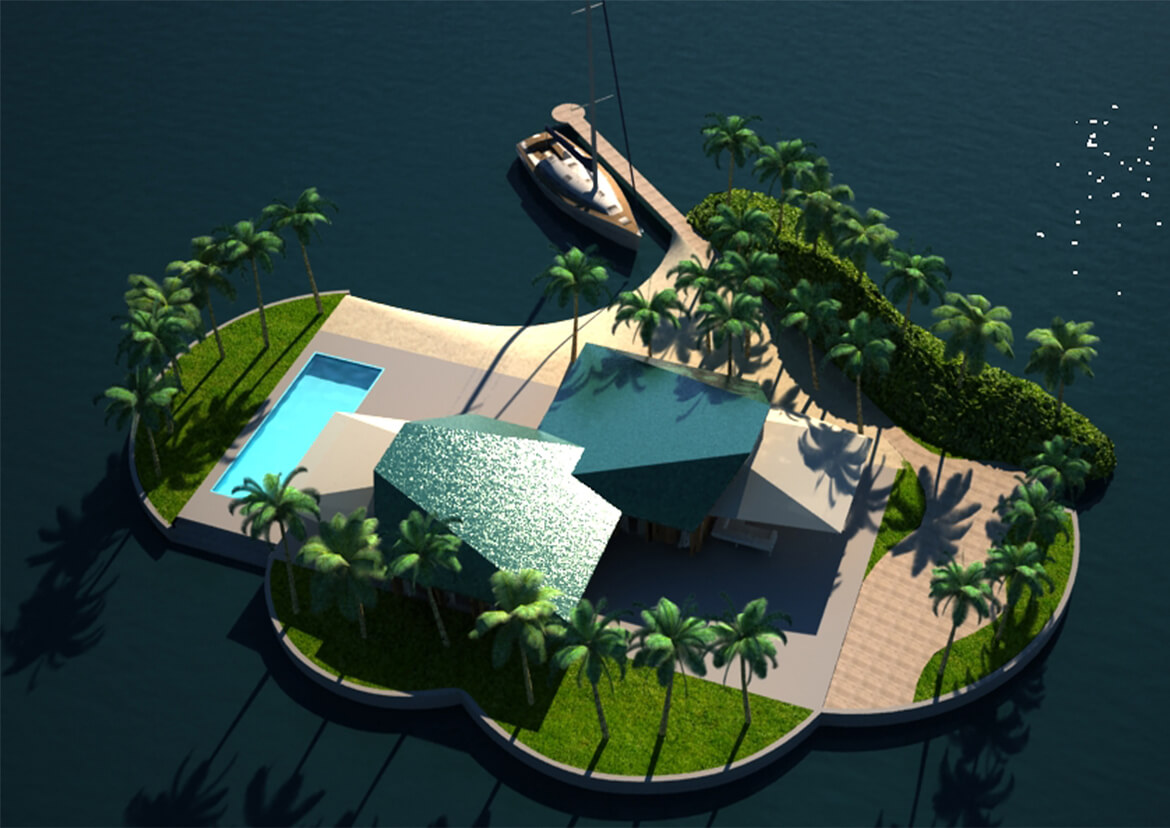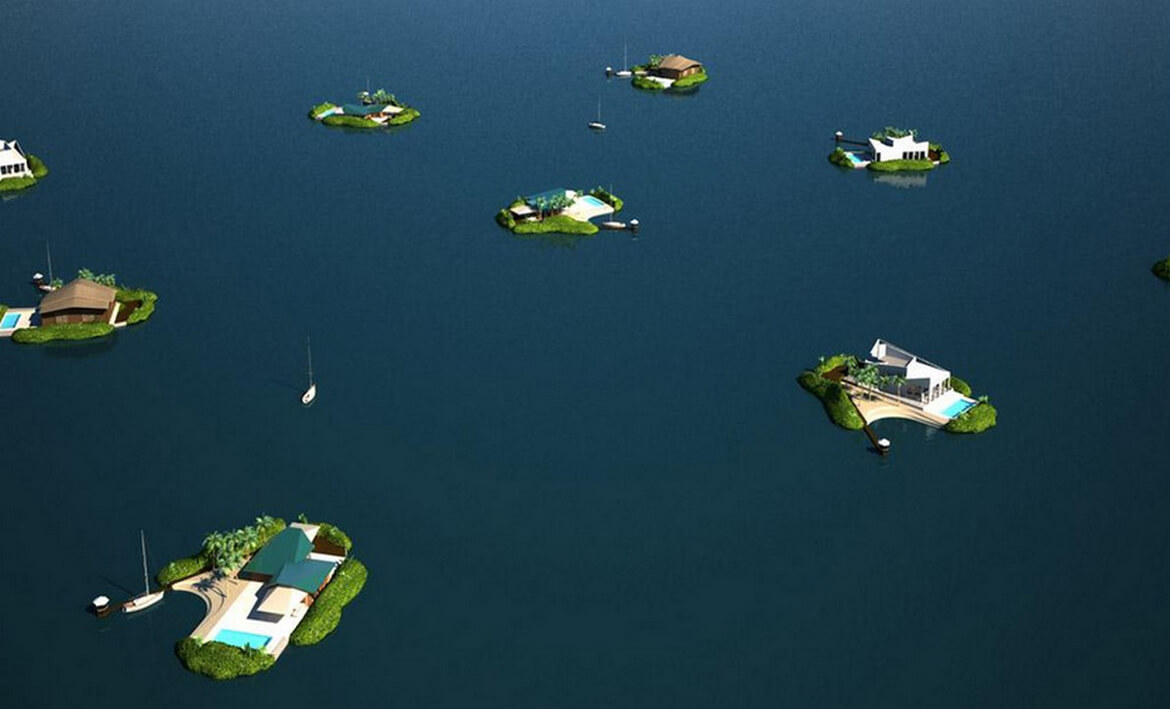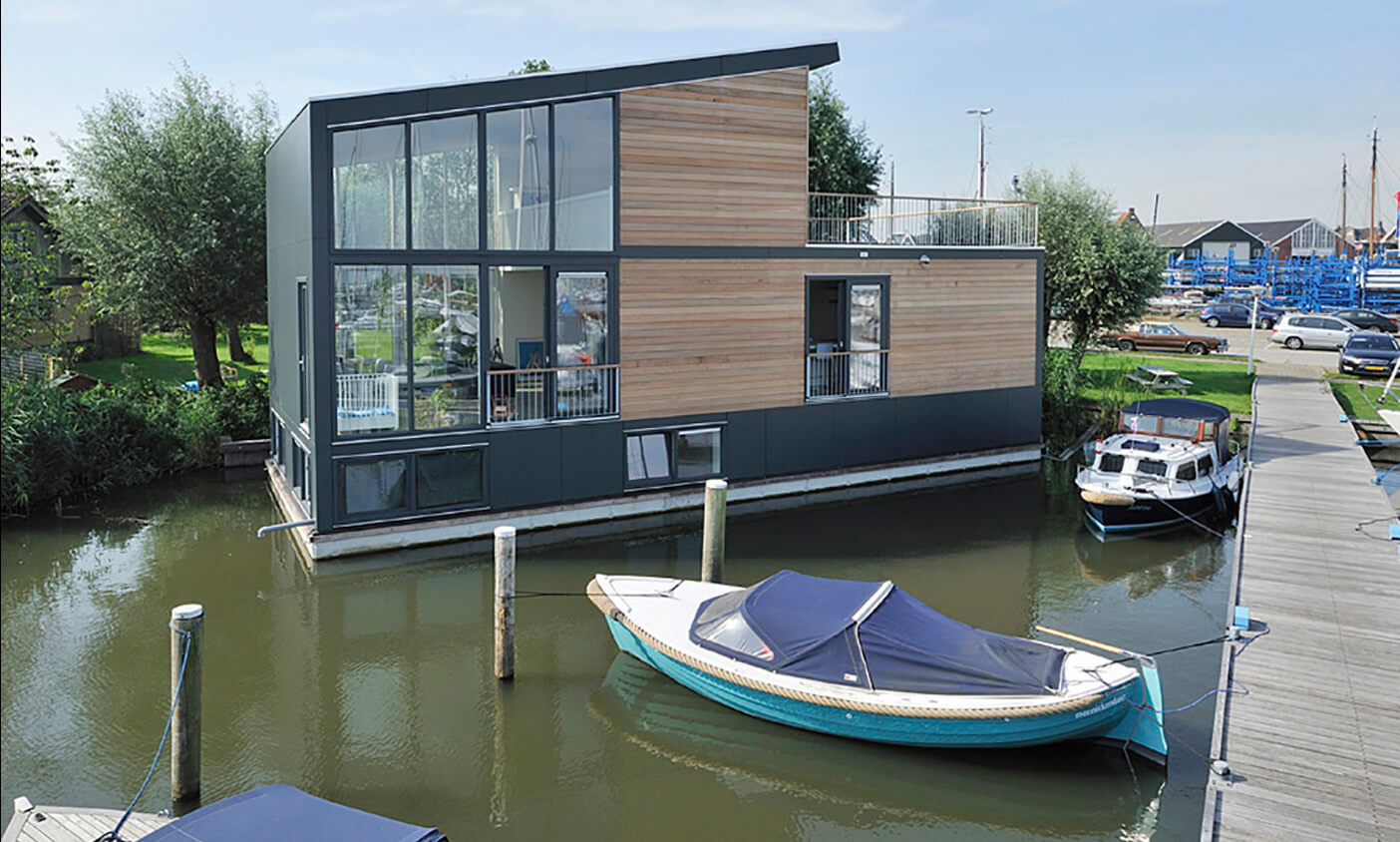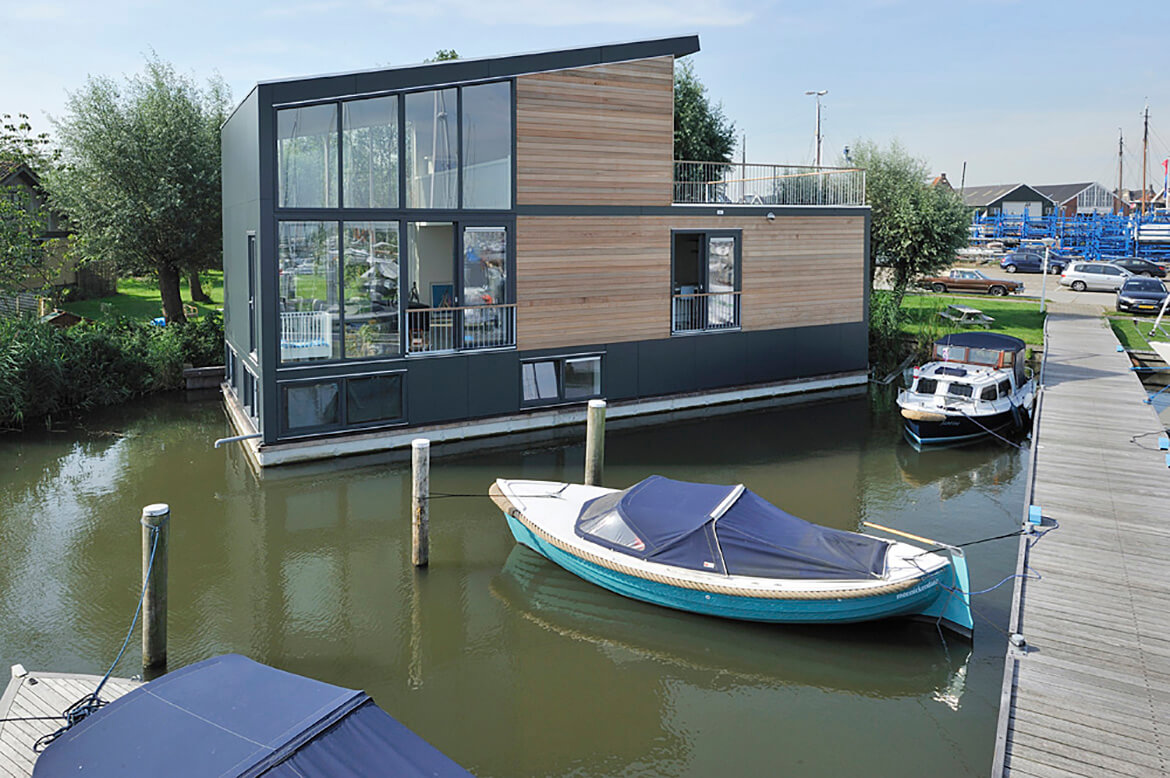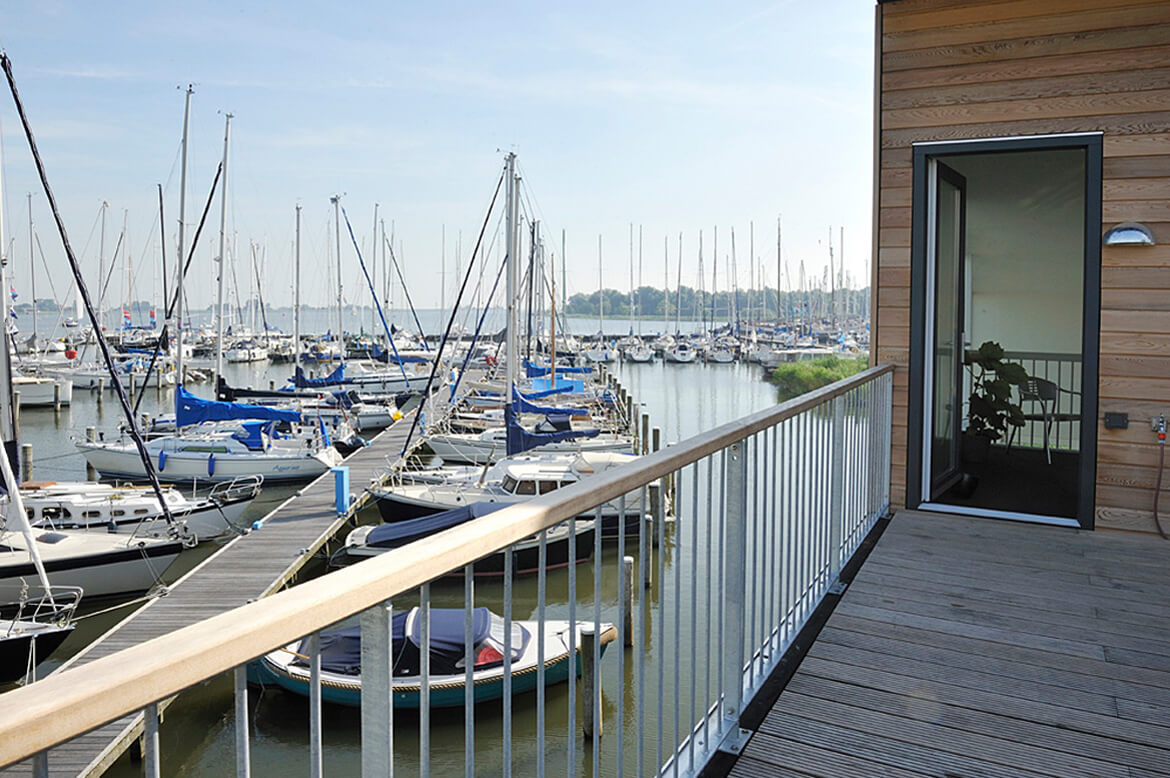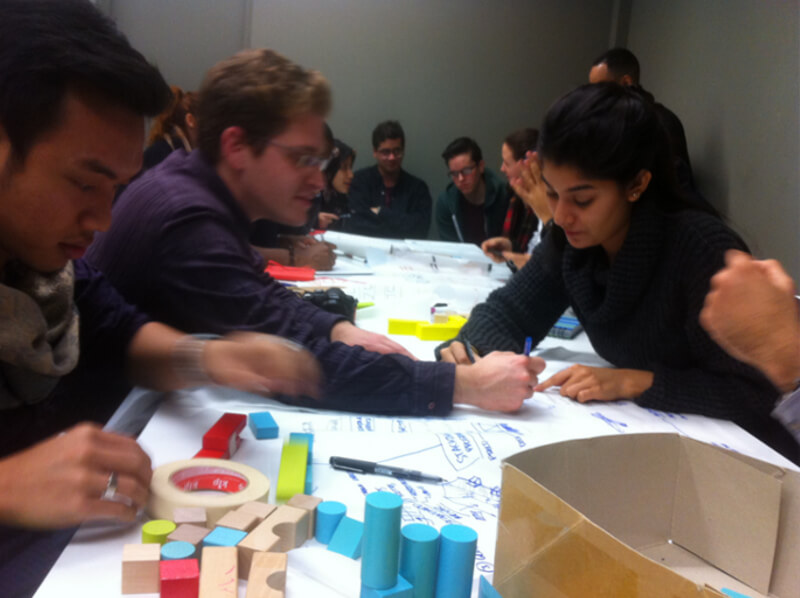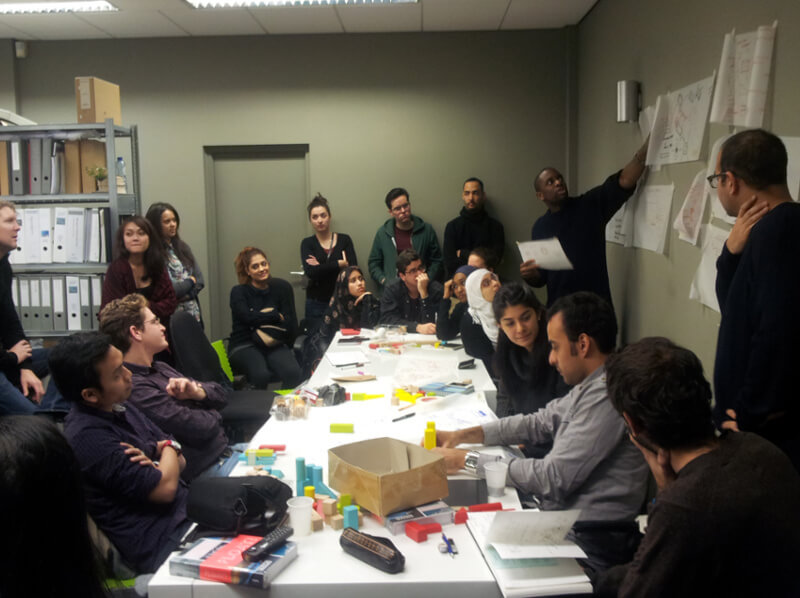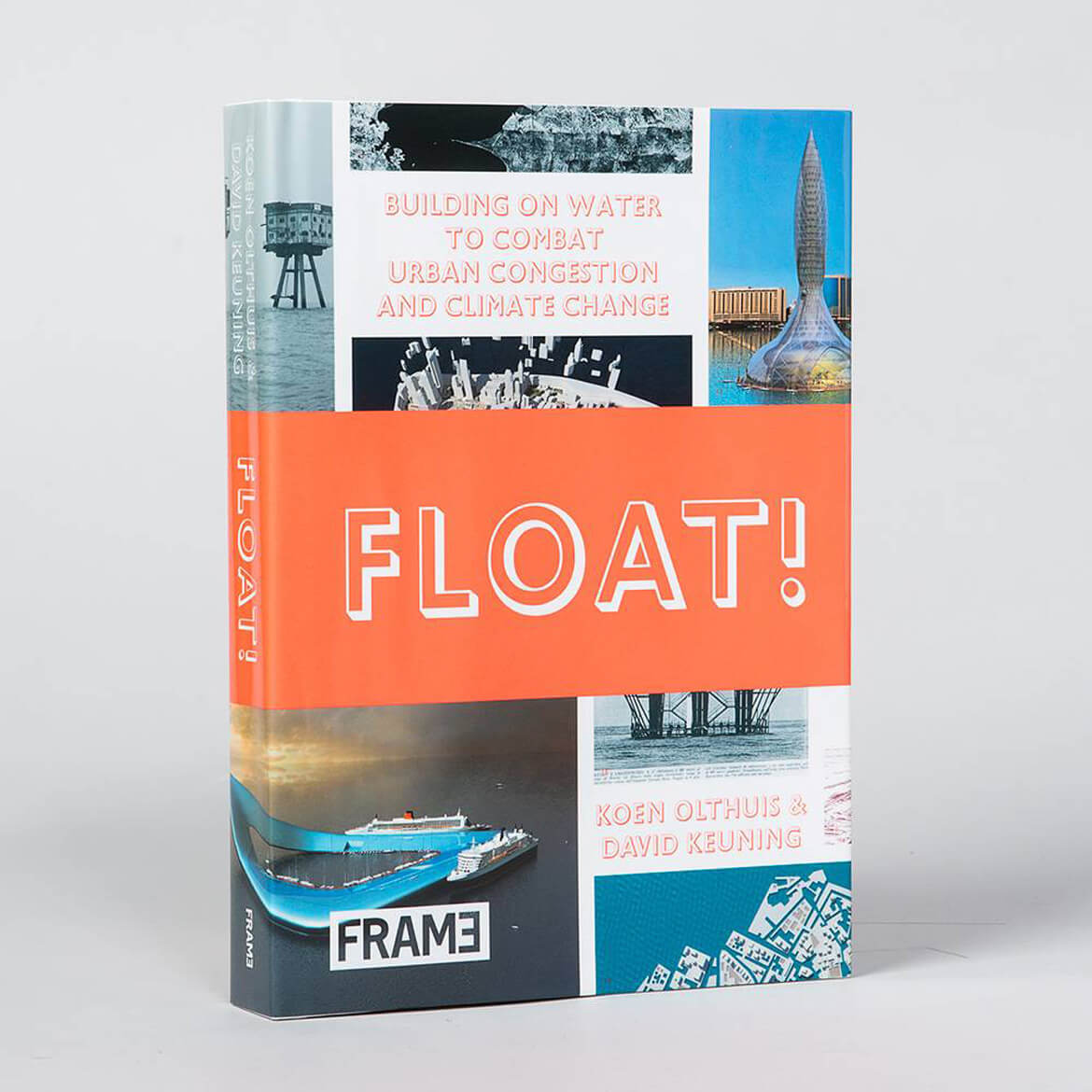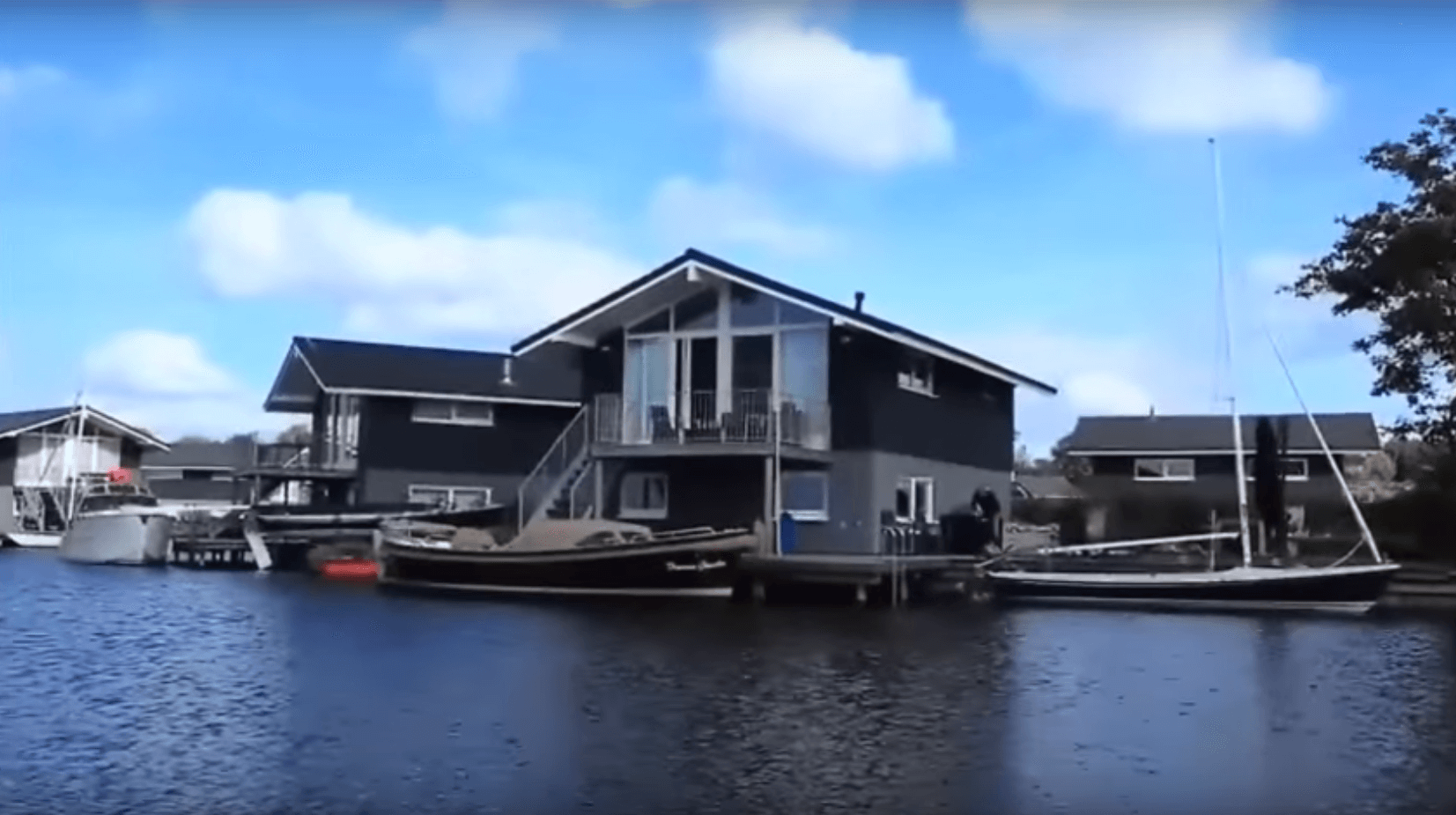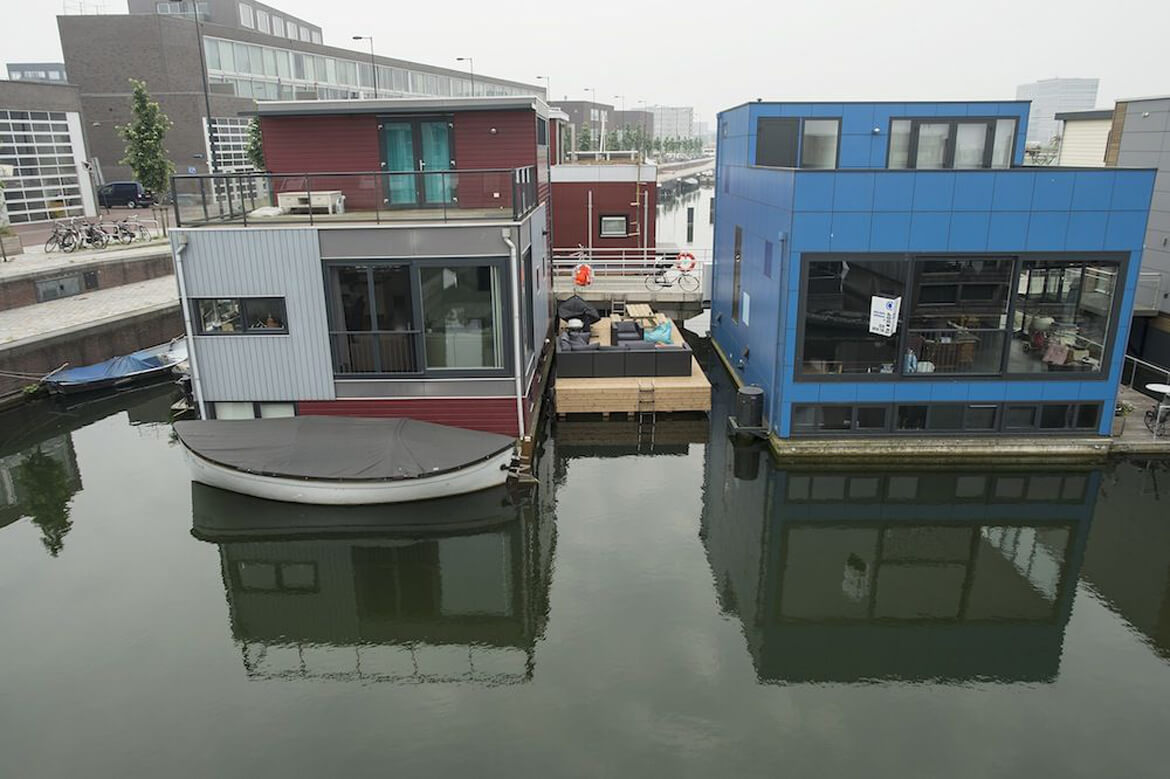
Le Mond, Audrey Garric, July 2013
Sur sa large terrasse arborée, Rick Uylenhoet profite de la légère brise marine. Ce pilote de ligne de 47 ans, qui passe ses journées dans les airs, a choisi de vivre sur l’eau. Il est le tout premier à s’être installé dans les maisons flottantes qui ont jeté l’ancre au cœur des îles d’Ijburg, un quartier de 20 000 habitants du sud-est d’Amsterdam (Pays-Bas).
“J’ai dessiné les plans moi-même”, lance-t-il fièrement, en faisant visiter sa spacieuse et lumineuse villa de 175 m2, sur trois étages, dans laquelle il vit avec sa femme et ses deux enfants depuis 2008. Dans son grand canapé blanc, caressant son chien, il raconte : “Ici, on a l’impression d’être toujours en vacances. L’été, les enfants se baignent devant la maison et découvrent de nombreux poissons. L’hiver, ils patinent sur le bassin. C’est fantastique de vivre sur l’eau : on s’y sent libre.”
Coût de l’embarquement : 650 000 euros pour la maison, soit 3 700 euros le mètre carré, alors que les prix peuvent grimper jusqu’à 7 000 euros dans le centre d’Amsterdam. Ce prix inclut celui de la parcelle d’eau de 160 m² (130 000 euros), donnée en concession par la ville pour une durée de cinquante ans renouvelable.
“EXPLOITER CETTE EAU QUI EST PARTOUT”
Depuis quelque temps, l’horizon de Rick Uylenhoet s’est toutefois voilé. Avec le succès de ce nouveau mode de vie, une trentaine de demeures personnalisées par des architectes ont amarré sur les pontons voisins. A quelques encâblures, de l’autre côté du bassin protégé par une digue, la municipalité a par la suite installé une soixantaine d’autres habitations flottantes, toutes identiques et moins chères.
“Amsterdam cherche à exploiter cette eau qui est partout”, explique Koen Olthuis, architecte du cabinet Waterstudio, qui a construit deux des maisons du quartier. Objectif : s’adapter à la montée du niveau des mers due au réchauffement climatique, mais, surtout, pallier le manque de place – les Pays-Bas enregistrent la deuxième plus forte densité de population d’Europe.
“Les maisons sont désormais trop proches les unes des autres. J’aimerais me sentir davantage dans la nature”, déplore le pilote, en montrant la vue plongeante sur le salon de ses voisins, à travers les immenses baies vitrées.
“AVOIR PLUS DE PLACE”
Cette proximité, Maartje Ramaekers n’en a cure. Au contraire, elle l’apprécie. La jeune femme de 35 ans, conseillère dans le domaine médical, a acheté avec son mari l’une des maisons flottantes récentes, une habitation mitoyenne cubique. “On a l’impression de vivre dans un village. On est très proches de nos voisins, avec lesquels on organise des fêtes, des barbecues, et on s’aide pour le baby-sitting”, s’enthousiasme-t-elle.
C’est pour leur fille, âgée de 2 ans, que la famille Ramaekers a élu domicile dans ce quartier d’Ijburg. “On a emménagé ici à la naissance d’Arte, pour avoir plus de place et lui faire profiter de la nature”, raconte la jeune mère alors que la petite joue dans le bac à sable installé sur la terrasse au ras de l’eau. A l’intérieur de la maison baignée de lumière, les jouets sont partout : depuis la vaste cuisine au rez-de-chaussée jusqu’aux chambres en bas, sous le niveau de la mer, en passant par le salon à l’étage, qui donne sur la terrasse où trône une balançoire. Pour ces 105 m2, le jeune couple a dû débourser 300 000 euros. Un investissement non négligeable. Mais, estiment ces amoureux de la voile, l’impression de grand large est à ce prix. “Vivre dans une maison flottante, c’est l’aventure !”
ÉQUILIBRER LES MEUBLES
Il a ainsi fallu s’habituer à dormir à 1,5 mètre sous le niveau de la mer – dans la “coque” de la maison-bateau – et au roulis en cas de grand vent. “On voit régulièrement les luminaires tanguer”, décrit Maartje Ramaekers. La maison, construite sur un caisson de béton flottant, est fixée à deux piliers solidement plantés dans l’eau, qui assurent sa stabilité tout en lui permettant de suivre le mouvement de l’onde. “Nous avons aussi dû équilibrer les poids de nos meubles avec ceux de nos voisins !”, ajoute-t-elle, en montrant son piano, disposé à l’extrémité du salon. L’hiver, le gel peut aussi s’emparer des tuyaux des arrivées d’eau, d’électricité et de gaz, qui courent sous les appontements. “On vit avec”, assure-t-elle.
Malgré l’attrait du quartier – médias et curieux s’y pressent depuis cinq ans –, certains logements n’ont pas trouvé preneur en raison de la crise économique. La municipalité projette néanmoins de construire de nouvelles habitations flottantes, plus loin vers la mer. Un nouveau quartier dans lequel Rick Uylenhoet se verrait bien emménager. En y remorquant sa maison.
Click here to read the article
Click here for the website

